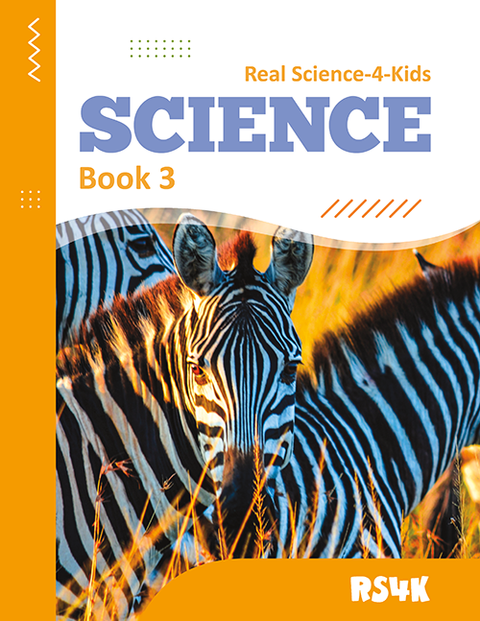
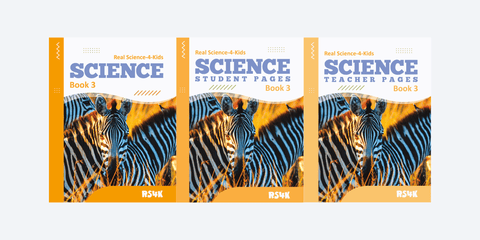
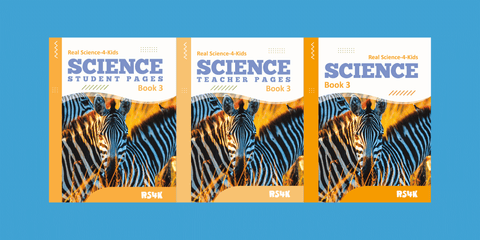
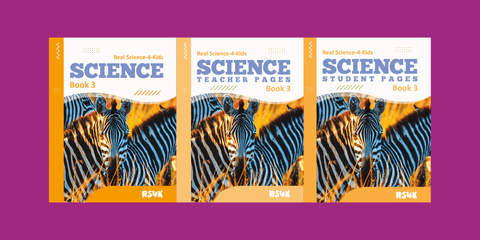
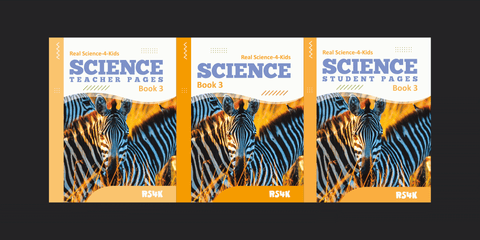
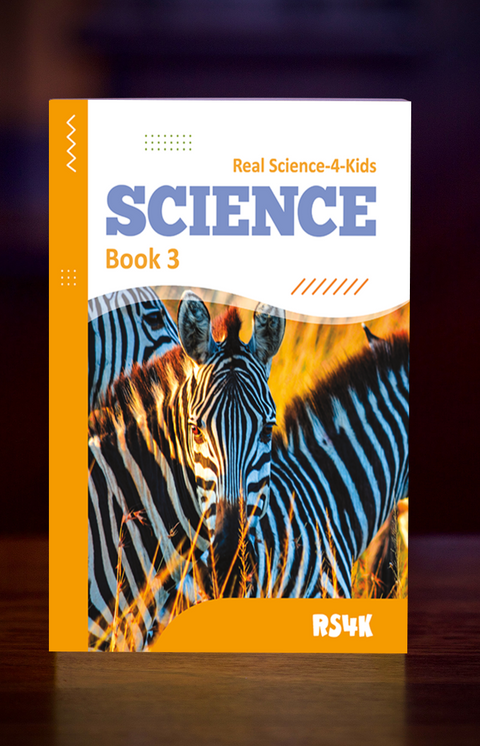
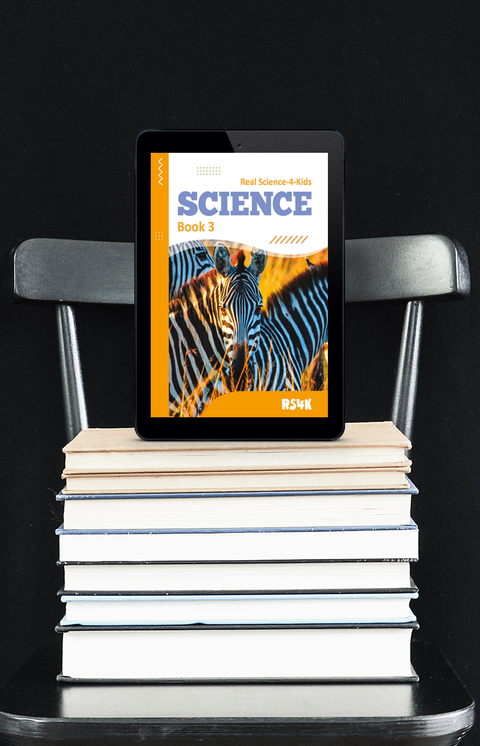
Science Book 3
Science Book 3
Full Curriculum Set
(Textbook, Student Pages, Teacher Pages)
Real Science-4-Kids Science Book 3 takes students deeper into the scientific world, expanding on the foundations of Books 1 and 2 with richer concepts and real-world relevance. This year-long curriculum continues the atoms-first spiral-learning model, helping students connect prior knowledge to exciting new discoveries.
What’s Inside the Set
-
Hardcover Student Textbook — Engaging and richly illustrated, introducing advanced yet age-appropriate topics across chemistry, biology, physics, geology, and astronomy.
-
Softcover Student Pages — Guided notebooks with study pages, RATATAZ experiment sheets, and quizzes. Students analyze, sketch, and record results, strengthening their identity as scientists.
-
Softcover Teacher Pages — Lesson objectives, pacing guides, experiment instructions, and answer keys. Designed to simplify teaching and support deeper learning conversations.
Why Families Love Book 3
-
Real-World Science — Students explore electricity, polymers, DNA, plant systems, water cycles, galaxies, and more—topics that spark both wonder and understanding.
-
Integrated Learning — Clear diagrams, vivid metaphors, and real scientific vocabulary help students see how chemistry, biology, physics, geology, and astronomy interconnect.
-
Progressive Depth — Concepts from Books 1 and 2 reappear at higher levels, preparing learners for the challenges of Book 4 and beyond.
-
Flexible Use — Independent readers excel around Grade 3+, while younger learners can thrive with parent read-aloud support.
Covered in 22 Chapters
-
Chemistry — Mixtures, un-mixing techniques, polymers, and molecules that form proteins and DNA.
-
Biology — Plant structure, function, food-making processes, and life cycles.
-
Physics — Energy at the atomic level, electron movement, electricity, and magnetism.
-
Geology — Water systems, environmental balance, and Earth’s magnetic field.
-
Astronomy — Galaxies, the Milky Way, comets, exploding stars, and nebulae.
Available Formats
-
Textbook — Hardcover print or Digital Flipbook (lifetime access).
-
Student Pages — Softcover print with perforated, tear-out notebook and cut-out activities, or downloadable PDF.
-
Teacher Pages — Print edition or digital PDF with lesson plans, answer keys, and experiment support.
Science Book 3 transforms science into a way of thinking—empowering students to ask questions, test ideas, and connect concepts across disciplines. With hands-on activities and a growing scientific vocabulary, learners are prepared for the deeper challenges ahead.
Reading Level: Grade 4+ for independent work
Concept Level: Grade 3+ with parent/teacher support


 Got A Question?
Got A Question?